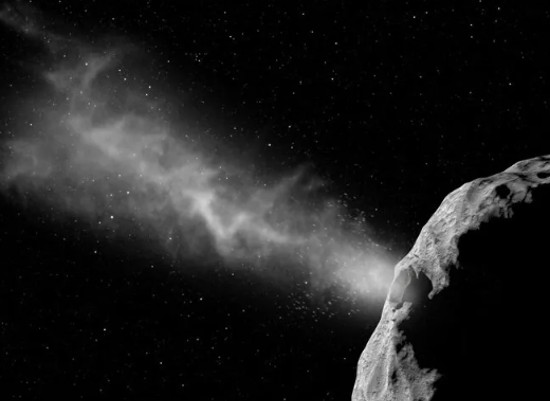At NASA, planetary defence is one of its priorities. The Agency points to the event 66 million years ago before the ancestors of humanity existed when a space rock crashed into the planet causing a major extinction event. Just how major?
- The shockwave from the impact released 325 Gigatons of sulphur and 425 Gigatons of carbon dioxide (CO2) into the atmosphere, more than 10 times the amount human activity releases each year.
- The explosive force was equal to 40,000 nuclear warheads.
- A cloud of dust encircled the entire planet reflecting sunlight which caused surface temperatures to fall by 26 Celsius (47 Fahrenheit) degrees with subfreezing temperatures persisting for more than three years.
- Ocean temperatures dropped dramatically taking hundreds of years to rebound.
- All surface plant life was destroyed.
- Most marine and terrestrial life died.
Could what happened 66 million years ago occur again? A study published in 2021 used a computer model to see how asteroids from the Belt lying between Mars and Jupiter could find their way to Earth. It simulated the thermal and gravitational forces within the Solar System and determined that about once every 250 million years a 10-kilometre (6-mile) sized asteroid could be flung from the Belt into a collision path with Earth. The frequency of this type of event happening was five times greater than previously thought.
A similar event 466 million years ago likely saw an asteroid from the Belt dislodge and break up into a rain of meteorites that caused Earth’s atmosphere to fill with dust leading to an Ice Age and enormous sea level drops. What followed is known as the Great Ordovician Biodiversification Event, a period in Earth’s history that saw an explosion of new marine and land animal life almost as impactful as the Cambrian Explosion that saw almost every form of modern life emerge less than 100 million years earlier.
Knowing what happened in the past has motivated NASA and the European Space Agency (ESA) to endeavour to develop a planetary defence strategy to intercept asteroids using kinetic impactors to deflect the largest of these rocks from striking Earth. This week saw a first demonstration when the Double Asteroid Redirection Test (DART) impacted a small moonlet named Dimorphos circling Didymos, a near-Earth asteroid. Check out the last five minutes of its flight at this Nature link.
The two bodies have never been in an orbit that would threaten Earth which made them ideal candidates for the demonstration test. So impacting Dimorphos would demonstrate the technology concept without consequences to our planet. DART’s onboard camera gave NASA a bird’s-eye-view of the spacecraft’s final 90,000-kilometre (56,000-mile) journey before it intentionally crashed at a speed of 22,530 kilometres per hour (14,000 mph). ESA’s companion CubeSat, called LICIACube) captured images of DART’s impact showing a cloud of ejected matter. In the next few weeks, NASA researchers will measure the orbit of Dimorphos around Didymos to see if the impact has altered it.
A follow-up ESA spacecraft, Hera, is planned four years from now to visit the asteroid and its moonlet to measure Dimorphos’ mass, study the impact crater left by DART and validate the effectiveness of using kinetic impactors as a planetary defence strategy.

















[…] DART mission, the acronym standing for Double Asteroid Redirection Test, which reached the Didymos asteroid and […]
[…] 2022, NASA’s Double Asteroid Redirection Test (DART) mission impacted a small companion moonlet called Dimorphos that was circling the asteroid Didymos. The […]
[…] as NASA demonstrated with the recent DART mission, we can build a space defence system to redirect space rocks bound for […]